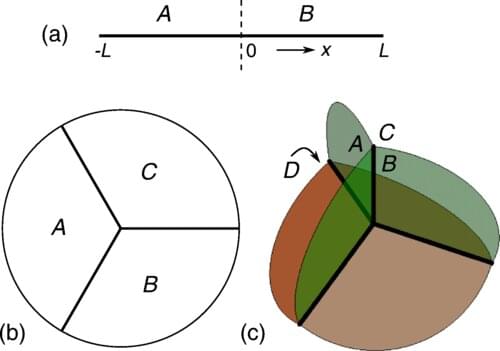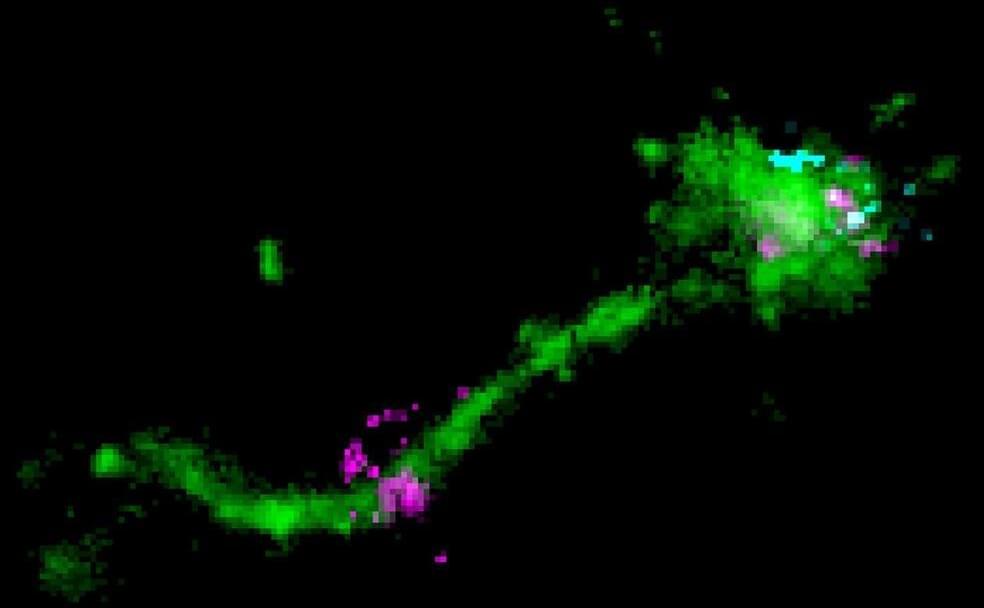Get the latest international news and world events from around the world.

AI-designed camera only records objects of interest while being blind to others
Over the past decade, digital cameras have been widely adopted in various aspects of our society, and are being massively used in mobile phones, security surveillance, autonomous vehicles, and facial recognition. Through these cameras, enormous amounts of image data are being generated, which raises growing concerns about privacy protection.
Some existing methods address these concerns by applying algorithms to conceal sensitive information from the acquired images, such as image blurring or encryption. However, such methods still risk exposure of sensitive data because the raw images are already captured before they undergo digital processing to hide or encrypt the sensitive information. Also, the computation of these algorithms requires additional power consumption. Other efforts were also made to seek solutions to this problem by using customized cameras to downgrade the image quality so that identifiable information can be concealed. However, these approaches sacrifice the overall image quality for all the objects of interest, which is undesired, and they are still vulnerable to adversarial attacks to retrieve the sensitive information that is recorded.
A new research paper published in eLight demonstrated a new paradigm to achieve privacy-preserving imaging by building a fundamentally new type of imager designed by AI. In their paper, UCLA researchers, led by Professor Aydogan Ozcan, presented a smart camera design that images only certain types of desired objects, while instantaneously erasing other types of objects from its images without requiring any digital processing.

Synthetic Data Generation for Computer Vision in Blender
Alex Martinelli writes:
This entry gives an introduction to and how you can use it via Blender to train performant and robust vision models. I provide the code and node-trees for a demonstrative visual classification scenario from the fashion domain. You’ll then be able to generate a technically infinite amount of images for your use-case.


FBL67: Jacob Ward — How AI Shapes Our Choices & Bad Habits
This week our guest is NBC technology correspondent, Jacob Ward, who recently released his book, The Loop: How Technology Is Creating a World Without Choices and How to Fight Back. In this episode we focus broadly on the ways in which technology and AI are learning from the worst instincts of human beings, and then using those bad behaviors to shape our future choices. As a result, Jacob suggests this creates feedback loops of increasingly limited and increasingly short-sighted behavior. This conversation includes exploring topics such as big data, bad incentives for programmers, profit motives, historical bias reflected in data, system 1 vs system 2 thinking, and much more.
Find out more about Jacob at jacobward.com or follow him on Twitter at twitter.com/byjacobward ** Host: Steven Parton — LinkedIn / Twitter Music by: Amine el Filali.
54 MINS

SpaceX says researchers are welcome to hack Starlink and can be paid up to $25,000 for finding bugs in the network
SpaceX says responsible researchers are welcome to hack into its satellite internet network, Starlink. It added that it could pay them up to $25,000 for discovering certain bugs in the service.
The announcement came after security researcher Lennert Wouters said last week he was able to hack into Starlink using a $25 homemade device. He said he performed the test as part of SpaceX’s bug bounty program, where researchers submit findings of potential vulnerabilities in Starlink’s network.
In a six-page document entitled “Starlink welcomes security researchers (bring on the bugs),” SpaceX congratulated Wouters on his research.
General Artificial Intelligence with Dr. Joscha Bach, AI Foundation
Welcome to our free science videos for teens and pre-teens, hosted by the interactive online science program for young explorers, Art of Inquiry!
www.artofinquiry.net.
Our speaker, Dr. Joscha Bach talks with the Art of Inquiry students about his work.
Attributions:
Oscilloscope Music: Jerobeam Fenderson, 2017 (https://www.youtube.com/channel/UCECl4aNz5hvuRzW5fgCOHKQ)
Nightingale and Canary: Animation by Andy Thomas, 2015
(https://www.youtube.com/watch?v=NtIHJSRQvvk)
Motion capturing animation of martial arts: Tobias Gremmler, 2016
(https://www.youtube.com/channel/UCqkyIq9QxKHMh4Z6lKafjUg)

Researchers explore a new connection between topology and quantum entanglement
Topology and entanglement are two powerful principles for characterizing the structure of complex quantum states. In a new paper in the journal Physical Review X, researchers from the University of Pennsylvania establish a relationship between the two.
“Our work ties two big ideas together,” says Charles Kane, the Christopher H. Browne Distinguished Professor of Physics in Penn’s School of Arts & Sciences. “It’s a conceptual link between topology, which is a way of characterizing the universal features that quantum states have, and entanglement, which is a way in which quantum states can exhibit non-local correlations, where something that happens in one point in space is correlated with something that happens in another part in space. What we’ve found is a situation where those concepts are tightly intertwined.”
The seed for exploring this connection came during the long hours Kane spent in his home office during the pandemic, pondering new ideas. One train of thought had him envisioning the classic textbook image of the Fermi surface of copper, which represents the metal’s potential electron energies. It’s a picture every physics student sees, and one with which Kane was highly familiar.

Researchers fabricate cobalt copper catalysts for methane on metal-organic framework
The world is highly dependent on fossil fuels to power its industry and transportation. These fossil fuels lead to excessive carbon dioxide emission, which contributes to global warming and ocean acidification. One way to reduce this excessive carbon dioxide emission that is harmful to the environment is through the electroreduction of carbon dioxide into value-added fuels or chemicals using renewable energy. The idea of using this technology to produce methane has attracted wide interest. However, researchers have had limited success in developing efficient catalysts for methane.
A Soochow University research team has now developed a simple strategy for creating cobalt copper alloy catalysts that deliver outstanding methane activity and selectivity in electrocatalytic carbon dioxide reduction. Their research is published in Nano Research.
Over the past 10 years, scientists have made notable progress in advancing their understanding of catalysts and applying the knowledge to their fabrication. But the catalysts that have been developed have not been satisfactory for use with methane, in terms of selectivity or current density. Despite the great insights scientists have gained, the strategies they have attempted in creating catalysts for methane are just too costly to be useful in practical applications.

Catch me if you can: How mRNA therapeutics are delivered into cells
In recent years, ribonucleic acid (RNA) has emerged as a powerful tool for the development of novel therapies. RNA is used to copy genetic information contained in our hereditary material, the deoxyribonucleic acid (DNA), and then serves as a template for building proteins, the building blocks of life. Delivery of RNA into cells remains a major challenge for the development of novel therapies across a broad range of diseases. Researchers at the Max Planck Institute of Molecular Cell Biology and Genetics (MPI-CBG) in Dresden together with researchers from the global biopharmaceutical company AstraZeneca have investigated where and how mRNA is delivered inside the cell. They found that mRNA uses an unexpected entry door. Their results provide novel insights into the development of RNA therapeutics towards efficient delivery and lower dosages.
DNA (deoxyribonucleic acid) contains the genetic information required for the development and maintenance of life. This information is communicated by messenger ribonucleic acid (mRNA) to make proteins. mRNA-based therapeutics have the potential to address unmet needs for a wide variety of diseases, including cancer and cardiovascular disease. mRNA can be delivered to cells to trigger the production, degradation or modification of a target protein, something impossible with other approaches. A key challenge with this modality is being able to deliver the mRNA inside the cell so that it can be translated to make a protein. mRNA can be packed into lipid nanoparticles (LNPs)—small bubbles of fat—that protect the mRNA and shuttle it into cells. However, this process is not simple, because the mRNA has to pass the membrane before it can reach its site of action in the cell interior, the cytoplasm.
Researchers in the team of MPI-CBG director Marino Zerial are experts in visualizing the cellular entry routes of molecules in the cell, such as mRNA with high-resolution microscopes. They teamed up with scientists from AstraZeneca who provided the researchers with lipid nanoparticle prototypes that they had developed for therapeutic approaches to follow the mRNA inside the cell. The study is published in the Journal of Cell Biology.